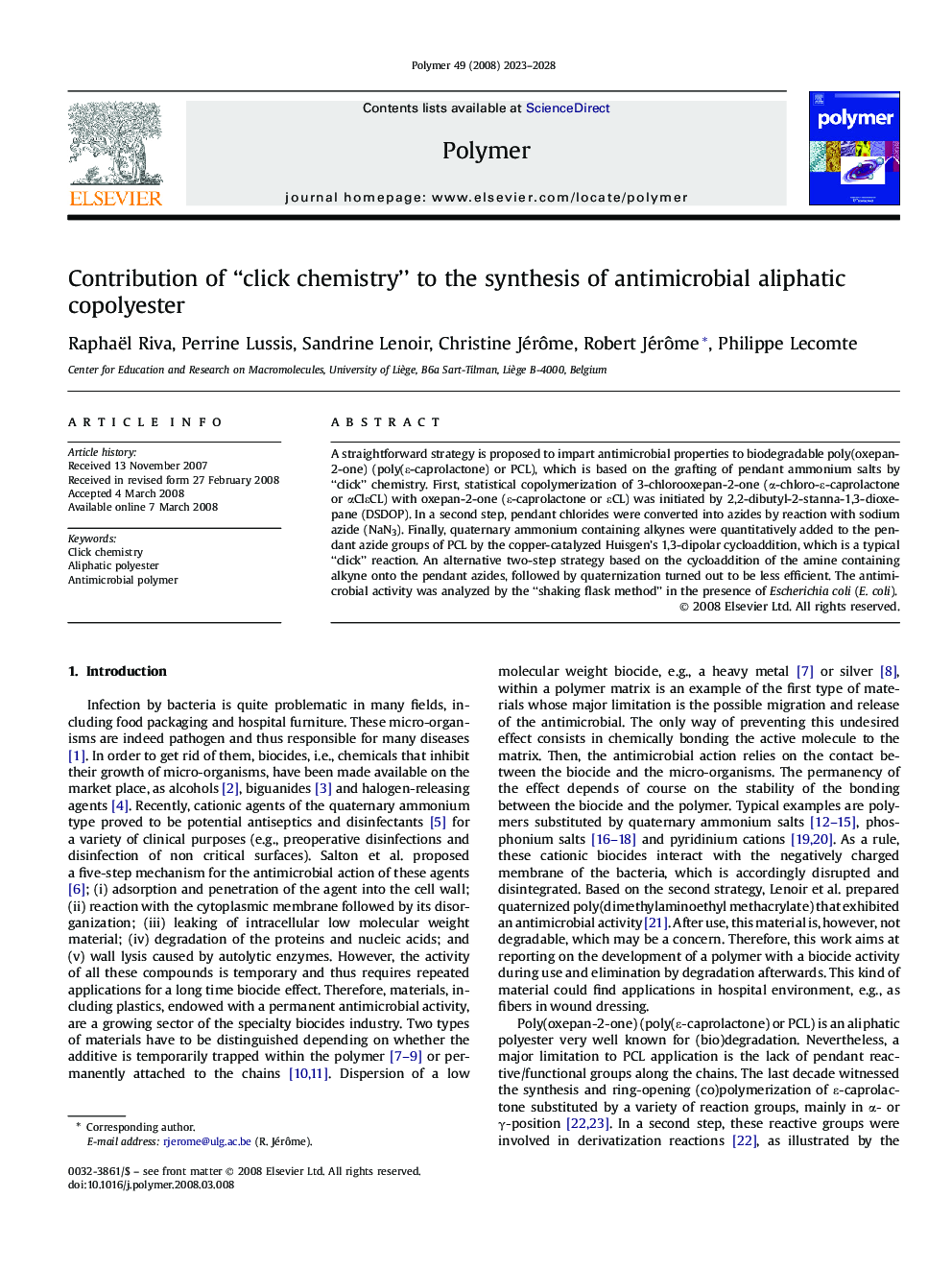| Article ID | Journal | Published Year | Pages | File Type |
|---|---|---|---|---|
| 5187646 | Polymer | 2008 | 6 Pages |
Abstract
A straightforward strategy is proposed to impart antimicrobial properties to biodegradable poly(oxepan-2-one) (poly(É-caprolactone) or PCL), which is based on the grafting of pendant ammonium salts by “click” chemistry. First, statistical copolymerization of 3-chlorooxepan-2-one (α-chloro-É-caprolactone or αClÉCL) with oxepan-2-one (É-caprolactone or ÉCL) was initiated by 2,2-dibutyl-2-stanna-1,3-dioxepane (DSDOP). In a second step, pendant chlorides were converted into azides by reaction with sodium azide (NaN3). Finally, quaternary ammonium containing alkynes were quantitatively added to the pendant azide groups of PCL by the copper-catalyzed Huisgen's 1,3-dipolar cycloaddition, which is a typical “click” reaction. An alternative two-step strategy based on the cycloaddition of the amine containing alkyne onto the pendant azides, followed by quaternization turned out to be less efficient. The antimicrobial activity was analyzed by the “shaking flask method” in the presence of Escherichia coli (E. coli).
Related Topics
Physical Sciences and Engineering
Chemistry
Organic Chemistry
Authors
Raphaël Riva, Perrine Lussis, Sandrine Lenoir, Christine Jérôme, Robert Jérôme, Philippe Lecomte,
